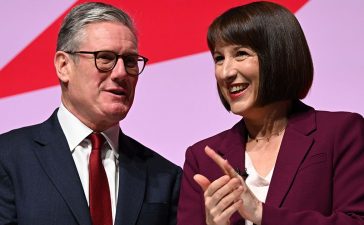British household energy bills are set to fall lower than previously expected in 2023, dropping below the level of the government’s price guarantee in the second half of the year.
Two of the UK’s most respected energy sector forecasters on Wednesday sharply reduced their estimates for domestic bills after unseasonably warm weather across Europe in recent weeks led to lower gas usage on the continent.
Martin Young of Investec bank said he anticipated that the price cap, which dictates energy bills for the majority of British households, would fall to about £3,460 a year in April, based on typical usage, dropping to £2,640 a year in July and hitting just over £2,700 in October.
Another forecaster, energy consultancy Cornwall Insight, also released its own revised price cap estimates on Wednesday, which, although slightly higher than those of Investec, showed a similar trend.
The price cap, which is revised every three months by energy regulator Ofgem, is currently at £4,279 a year on average. However, consumers have been partially shielded by the government’s support scheme, which limits the price per unit of energy that suppliers can charge customers.
The government scheme is aimed at restricting a typical household bill to about £2,500 a year until the end of March. From April 1, Jeremy Hunt, the chancellor, had committed to continue support but at a lower level that would bring the typical bill to around £3,000 a year.

The latest price cap forecasts, if realised, would provide some limited relief for households wrestling with rising living costs and reduce the amount the government needs to spend on support. The Treasury funds the difference between the capped unit price charged to customers and the actual cost of buying electricity and gas on wholesale markets.
On Wednesday, Hunt met with business groups to reassure them that the separate “energy bill relief scheme” for corporate energy customers will continue when the current six-month scheme ends in March.
Hunt said the scheme had so far cost an “unsustainably expensive” £18bn and the government could not “permanently shield” businesses from the global energy price shock.
However, he added that the government would continue to support businesses with their bills, albeit at a less generous level, to avoid a “cliff edge”.
The Treasury has drawn up plans for universal support at a lower level with extra assistance for energy-intensive industries for another year but this has not yet been signed off by Hunt or Rishi Sunak, the prime minister.
Young estimated that the UK’s household energy bill support could fall to £3bn in the 2023-24 fiscal year, versus £25bn in the 12 months to April 5, although he warned that the forecasts were subject to revision if there were further upswings in wholesale energy prices.
Young cautioned that the costs for British households would remain high compared with historic levels. A year ago, a typical bill was £1,277 a year under the price cap. “With other bills rising, the cost of living crisis remains real and devastating for many,” he added.
Investec’s latest forecasts represent a decline of between £400 and £600 on predictions made in late December.
However, fuel poverty campaigners warned that unless the price cap falls below £2,100 a year, households will be significantly worse off next winter. The government has given every household £400 off their energy bills this season — delivered in instalments — on top of other support.
The energy crisis was largely triggered by Russia’s invasion of Ukraine and curtailment of gas supplies to Europe as early as 2021, which sent wholesale markets soaring.
But the declines in wholesale prices in recent weeks reflect a broader view in the sector that the UK has ample energy supplies for this winter, while traders are more confident of their ability to refill gas storage sites across Europe from the spring, despite lower Russian exports.
The UK has been partly helped by lower gas demand in recent days as strong wind speeds and high levels of imports from continental Europe have cut the amount of gas used for electricity generation.
Gas normally makes up about 40 per cent of Britain’s electricity generation as well as being used to heat the vast majority of homes.











